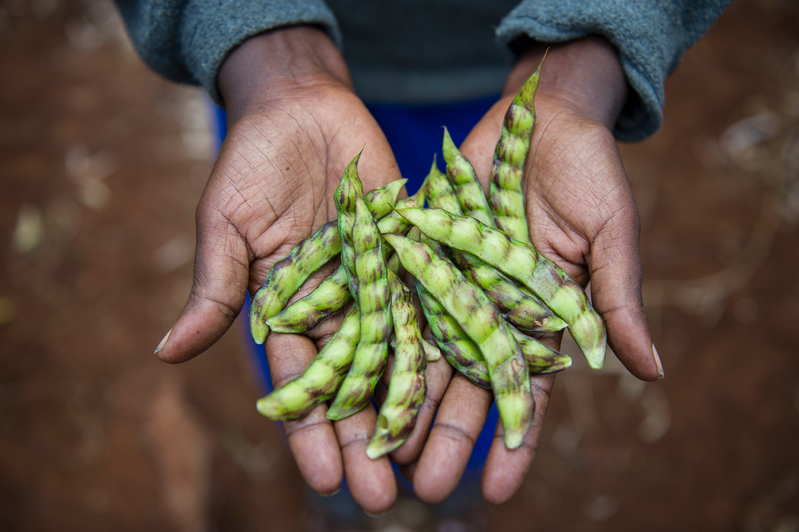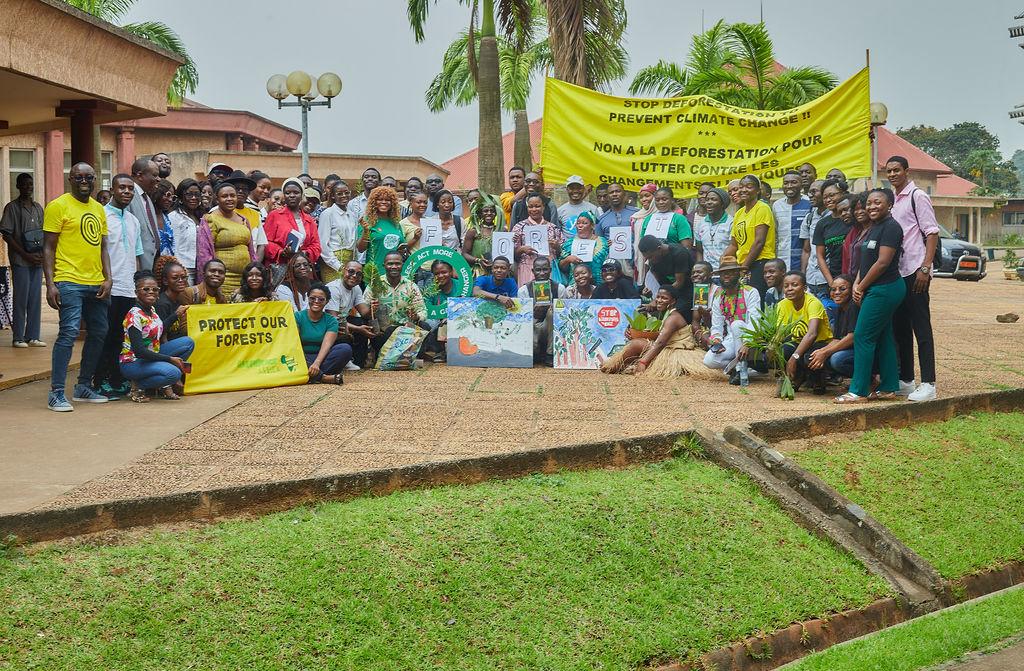Learning objectives of this guide
- To describe what a seed is.
- To explain the different types of seeds
- To explain how to harvest seeds from mature crops
- To explain what seed sovereignty
- To describe the process of saving seed
- To explain the importance of seed sovereignty in relation to food security
Learning outcomes
This how to guide on seed saving and storage will enable you to
- Understand the process of seed saving
- Understand seed sovereignty and its importance

Introduction
Seeds are the first link in the food chain and the repository of life’s future evolution. As such, it is our inherent duty and responsibility to protect them and to pass them on to future generations. The growing of seed and the free exchange of seeds among farmers has been the basis to maintaining biodiversity and our food security. Today, the threat is greater. We are witnessing a seed emergency at a global level. The disappearance of our biodiversity and of our seed sovereignty is creating a major crisis for agriculture and food security around the world. The current industrial food system based on monocultures, widespread use of agrochemicals, commercial/ patented seeds and genetically modified seeds is a major contributor of the disappearance of 75% of plant genetic diversity in the last century. Of the original 10,000 species, barely more than 150 species are now under cultivation and the great majority of mankind is now living off no more than 12 plant species.
Click here to read more on seeds

What are the various types of seeds?
Seed is produced mostly by transfer of pollen (male parts) to female parts of the flower and is called – Pollination. It is carried out by wind, insect, birds, or other natural agents. Open-pollinated Varieties (OPV) seed is one in which pollination is carried out from either the same (parent) plant.
| Self-pollinated Crops seed | Hybrid seeds | Genetically Modified Organisms (GM or GMO) Seeds |
| Those plants that pollinate themselves by accepting pollen from within their own flower before it opens. The seed saved from both an open and self-pollinated variety can be used for planting in a few subsequent years on. | Hybrid seeds are produced through controlled cross-pollination of one specific variety of a class of plant with the pollen of another genetically different variety of that class. | Genetic modification is the transfer of specific genes into the plant in a laboratory. The genes introduced in the plants include the capability and characteristics of the species of plants, bacteria or animals that have been transferred from external sources. |
What is seed sovereignty?
It is the farmer’s rights to save, breed and exchange seeds, to have access to diverse open source seeds which can be saved –and which are not patented, genetically modified, owned or controlled by emerging seed giants.
Importance of seed sovereignty
- It is the basis to maintaining biodiversity as well as food security.
- High-quality open source seeds can be easily produced and at a low cost, thus, reducing the costs of purchasing seeds.
- Allows farmers produce their own seeds (seed self-reliance)
- It allows for the free exchange of and sell of seeds among farmers.
- Enables farmers to select seeds suited to their environment. If one wants fruits that are big and are not attacked by pests in the garden, they can choose seeds of the plants that are grown in their garden with these specific traits.
- It enables the preservation of valuable traditional or indigenous seed varieties of vegetables for future generations.
Seed saving refers to the practice of saving various types of reproductive material and seeds from plants such as flowers, herbs, grains, vegetables, and tubers for future use. Seed saving was the traditional way that gardens and farms were maintained centuries ago. While commercial farmers rarely practice seed saving nowadays, it is still a common practice among home gardeners, especially for economic reasons. In order to cultivate certain types of crops, farmers need to have access to these seeds. This makes seeds the most valuable input for farming. They are not only needed for farming,

but also serve as food, for example wheat, maize and rice and can be sold to generate income and contribute to improving people’s livelihoods. Acquiring seeds through the formal seed sector may be too costly for farmers, there may not be varieties available that are adapted to specific local conditions, or the supply of seeds may be erratic, meaning seeds are not available at specific times. Farmers that save seeds, can access them to grow crops during the next planting season or use them as an emergency seed supply when their crops are damaged and destroyed, for example, due to flooding. In this way, farmers do not need to buy seeds from external buyers, and it helps them to diversify by cultivating several crop varieties that are highly adapted to the environmental conditions of their region, which builds up their resilience.
Seed harvesting, threshing, cleaning, drying and storage
Proper post-harvest processing is critical to maximize yield, longevity, vigor, and overall quality of the seed crop. At maturity, seed must be harvested, threshed, cleaned and fully dried before storage. Each of these steps require proper timing, skills and in some cases, equipment. Investing in the long growing season of a seed crop only to lose it with improper harvest and post-harvest handling, is an incredibly frustrating experience.
Seed processing
A. Threshing Is the process of removing seeds from the plant and breaking up remaining plant materials (e.g. stems and leaves) into what is called chaff. The dry seed heads attached to the plants are rubbed or crushed to release the seed and break down the plant material. This step facilitates the subsequent separation of the seeds from the plant materials in the seed cleaning process. Threshing may be done by hand or machine, depending on the scale and type of seed to be processed.
B. Cleaning: All foreign material should be removed by sieving, winnowing and other methods.
C. Drying: Seed received from the farmer’s field is dried to the required moisture content
D. Seed Treatment: Seed must be treated to protect it during the storage process and also in the initial stages after planting. Bagging or packaging- the seed should be packaged in bags and labelled, with the necessary information.
Seed packaging, bulking and storage
Seed is a living matter and if not handled and stored properly it can die. Reasons for seed deterioration.
- High temperature in the seed store
- High humidity in the storage area.
- Handling & storage of seed
- High moisture content of the seed itself.
- Storage in improper packaging that cannot
- Prevent moisture from entering the package.
- Storage of uncleaned and untreated seed.
- Presence of pests and diseases.
- Extreme temperature (too hot or too cold) can lead to serious seed damage.
- High humidity in the store can lead to serious seed damage through mold formation.
- High humidity also encourages the growth of insects and pests in the store.
Measures to avoid seed deterioration during packaging and storage.
- Seed bags should not be thrown carelessly.
- Seed bags should be stored in dry, well-ventilated stores.
- Always use slatted wooden pallets or PVC sheets spread on the floor.
- Recommended moisture content for seed storage is 12%.
- Avoid storage of seeds together with chemicals, especially those that emit vapours.
- Avoid the sale of seed from open bags or containers.
- Avoid light exposure to sunlight as this will shorten the life of seeds. Use dark-colour jars or non-transparent containers to protect seed from sunlight. If using clear jars, place them in paper bags to shield out sunlight.
- Newly harvested seeds should not be immediately stored in a plastic bag because the moisture content of the seed is still high and will lead to deterioration.
E. Storage
Indigenous knowledge is eco-friendly and safe both to man and his environment. It is estimated to 60-70% of food grain produced in Kenya is stored at home level in indigenous structures ranging from Granaries, gunny bags and modern bins. Proper storage of seed is necessary to protect from spoilage, increasing storage quality, germination and viability of the seeds. Traditional technical skills teach us how to best utilization of natural sources for protects storage life of seed. The purpose of seed storage is to maintain the seed in good physical and physiological condition from the time they are harvested until the time they are planted.
General; principles in seed storage
- Seed storage conditions should be dry and cool
- Effective storage pest control
- Proper sanitation in seed stores
- Before seed storage, they should be dried to safe moisture limits, appropriate for storage systems
- Store high quality seed and well cleaned, treated as well as of high germination vigour and good pre-storage period.
- Seed longevity is improved by storing seeds in low temperature and low moisture content.
Seed Storage types of Sealed containers
- Aluminium or plastic cans
- Aluminium pouches
- Plastic bottles
- Waxed boxes
- Laminated paper bags
Open storage: This does not have temperature or relative humidity control. This needs basic protection for water, contaminating agents and rodents.
Conditioned storage: This is more commercial, with conditioned temperature and humidity control. Used for high value seeds.
You can get indigenous seeds from Seed savers network
Contact +254 712 451 777
References
- https://navdanyainternational.org/key-issues/seed-freedom/
- http://www.fao.org/3/ad226e/AD226E04.htm
- Roeland Kindt et,al; Tree seeds for farmers; A Toolkit and Reference Source
- Petersen, Maja Eline. “Seed sovereignty-how can organic agriculture contribute to the development and protection of the seed, a case study of Nepal.” (2014)
- Training manual for Sustainable Ecological Agriculture and Community Development – Edited version 2017




